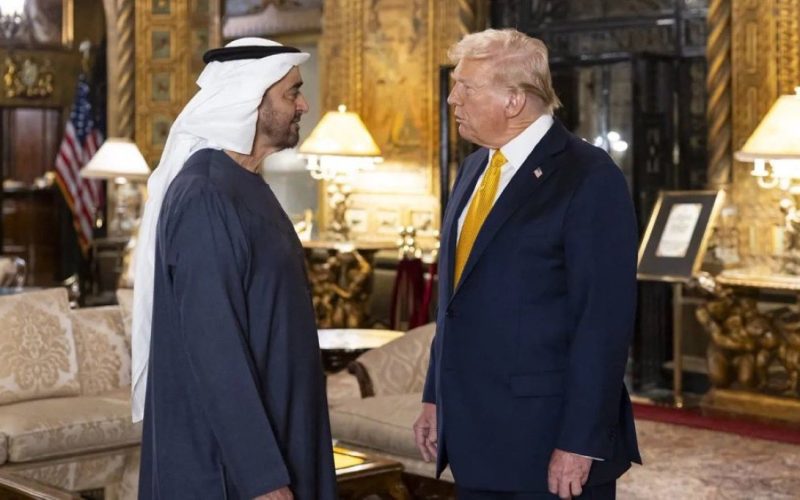While much of the attention surrounding Trump’s final leg in the Middle East has focused on the headline-grabbing business and AI deals with the UAE, a deeper look reveals a tour layered with diplomatic maneuvers, regional power plays, and shifting alliances.
Trump’s whirlwind journey, which reportedly secured deals worth up to $10 trillion across Saudi Arabia, Qatar, and the UAE, was as much about economic leverage as it was about recalibrating America’s role in a region defined by volatility and competition.
The UAE’s $1.4 trillion commitment to invest in the U.S. AI sector over the next decade is just one facet of a broader strategy to cement the Gulf’s status as a technological and financial powerhouse, while simultaneously tying its fortunes more closely to those of Washington.
Beyond the business tables, Trump’s trip was punctuated by a series of high-stakes diplomatic gestures. In a move that stunned many observers, he announced the lifting of longstanding U.S. sanctions on Syria after a historic meeting with interim President Ahmed al-Sharaa-the first such dialogue between U.S. and Syrian leaders in a quarter-century.
This overture, intended to give Syria a path toward recovery and national unity, also reopens questions about America’s willingness to engage with pariah states when strategic interests dictate. Meanwhile, Trump’s push for Saudi Arabia to normalize relations with Israel and his ongoing efforts to rein in Iran’s nuclear ambitions underscore his administration’s desire to reshape the region’s diplomatic landscape, even as the war in Gaza and humanitarian crises in Yemen and Sudan continue to simmer.
The tour also highlighted the growing rivalry between the U.S. and China for influence in the Gulf. Trump’s deals, particularly those involving the transfer of advanced Nvidia AI chips to the UAE, were designed to outmaneuver Beijing and ensure that Gulf states remain tethered to American technology rather than turning eastward.
As national security hawks warn of the risks posed by such technology transfers, especially given the Gulf’s previous partnerships with Chinese firms. The agreements include provisions meant to limit Chinese access, but critics argue that enforcement remains a significant challenge.
On the economic front, the deals with the UAE are expected to boost American manufacturing, particularly in aviation and high-tech sectors, while providing the Gulf states with the tools to diversify away from oil dependency.
Etihad Airways’ $14.5 billion Boeing order and the planned construction of the world’s largest AI data center campus in Abu Dhabi are emblematic of this new era of cooperation. At the same time, the UAE’s investments are part of a broader campaign to position itself as a global hub for artificial intelligence, data infrastructure, and next-generation technology.
Trump’s tour was also marked by symbolic gestures and local color, from camel parades to the spectacle of Tesla Cybertrucks in Qatari security convoys. In Qatar, he announced a $10 billion investment in the Al Udeid Air Base and celebrated $42 billion in new defense purchases, further entrenching the U.S. military presence in the region.
Yet, for all the spectacle and dealmaking, the underlying question remains whether these agreements will translate into lasting stability, or whether they will simply intensify the region’s complex web of rivalries and dependencies.
Ultimately, Trump’s Middle East tour was a demonstration of transactional diplomacy at its most ambitious, blending commercial interests with strategic calculations. The deals struck in the UAE and beyond are poised to shape not only the economic future of the Gulf but also the broader contours of U.S. engagement in a region where alliances are fluid and the stakes are perpetually high.
The coming months will reveal whether these megadeals deliver on their promise or become another chapter in the long saga of Middle Eastern geopolitics.





